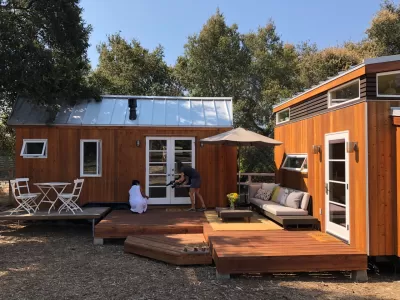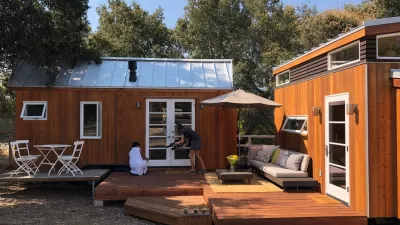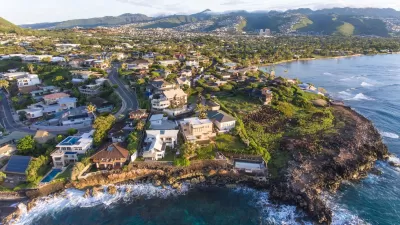Against opposition, the town of Durango, Colorado has successfully found a way to permit accessory dwelling units and legalize those that already existed under the radar.

Accessory dwelling units (ADUs) can be "an instant source of affordable housing, if only they could be freed from extensive restrictions that cities and towns have in place that tightly limit who can live there," Anthony Flint writes.
In Colorado, the city of Durango overhauled its land use code from 2009 through 2013, making ADUs an acceptable form of housing. "The big problem, however, was what to do with existing ADUs," Flint says.
To tackle that, Durango launched a program of "ADU amnesty" requiring owners with (technically illegal) ADUs on their property to come forward, pay fees, and get registered. "Getting the transactional details on the record was basically a process of regularizing what was a robust informal economy."
Meanwhile, persistent local opposition emerged to the legalization of ADUs. Durango's planners "held firm," devising public education campaigns to placate resident concerns. "There may be no secret sauce for getting this done, but demonstrating the benefits—to owners, and to the community at large—is surely a centerpiece."
FULL STORY: How One Colorado City Instantly Created Affordable Housing

Trump Administration Could Effectively End Housing Voucher Program
Federal officials are eyeing major cuts to the Section 8 program that helps millions of low-income households pay rent.

Planetizen Federal Action Tracker
A weekly monitor of how Trump’s orders and actions are impacting planners and planning in America.

Ken Jennings Launches Transit Web Series
The Jeopardy champ wants you to ride public transit.

California Invests Additional $5M in Electric School Buses
The state wants to electrify all of its school bus fleets by 2035.

Austin Launches $2M Homelessness Prevention Fund
A new grant program from the city’s Homeless Strategy Office will fund rental assistance and supportive services.

Alabama School Forestry Initiative Brings Trees to Schoolyards
Trees can improve physical and mental health for students and commnity members.
Urban Design for Planners 1: Software Tools
This six-course series explores essential urban design concepts using open source software and equips planners with the tools they need to participate fully in the urban design process.
Planning for Universal Design
Learn the tools for implementing Universal Design in planning regulations.
Ada County Highway District
Clanton & Associates, Inc.
Jessamine County Fiscal Court
Institute for Housing and Urban Development Studies (IHS)
City of Grandview
Harvard GSD Executive Education
Toledo-Lucas County Plan Commissions
Salt Lake City
NYU Wagner Graduate School of Public Service





























